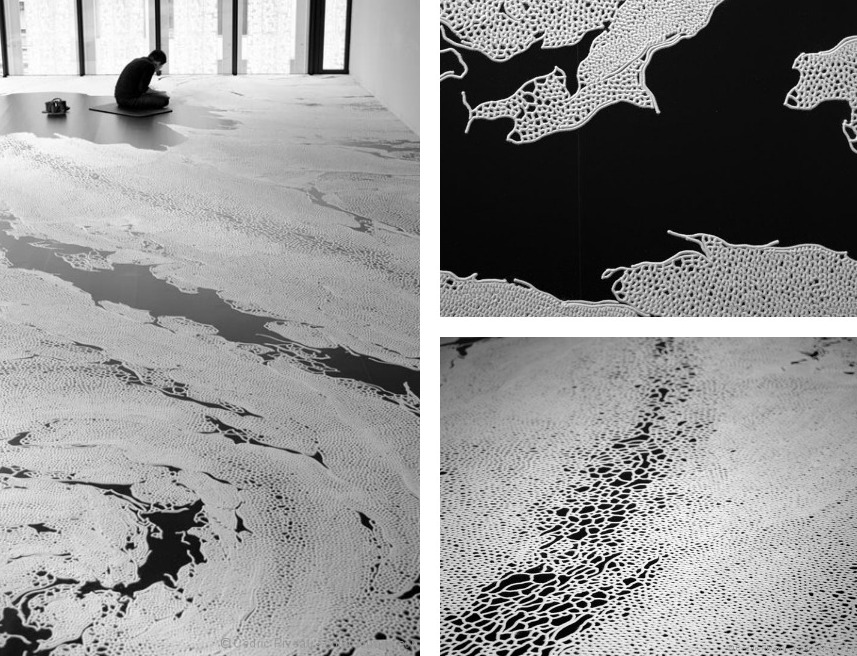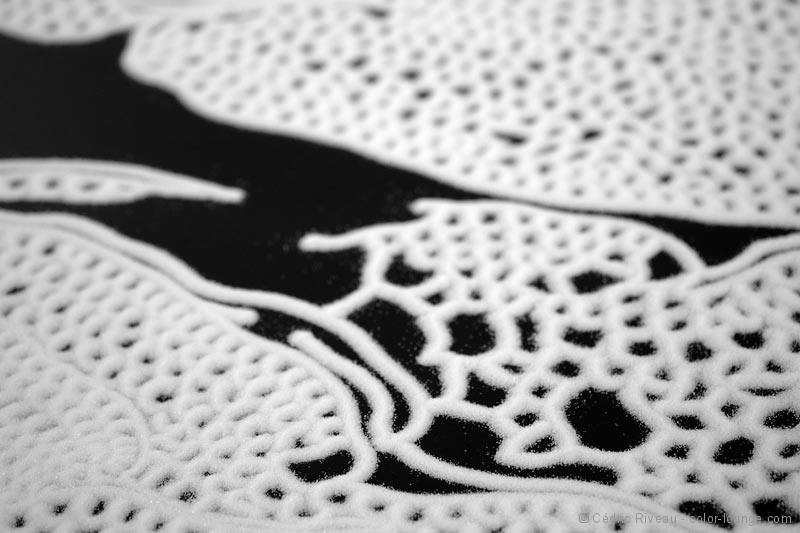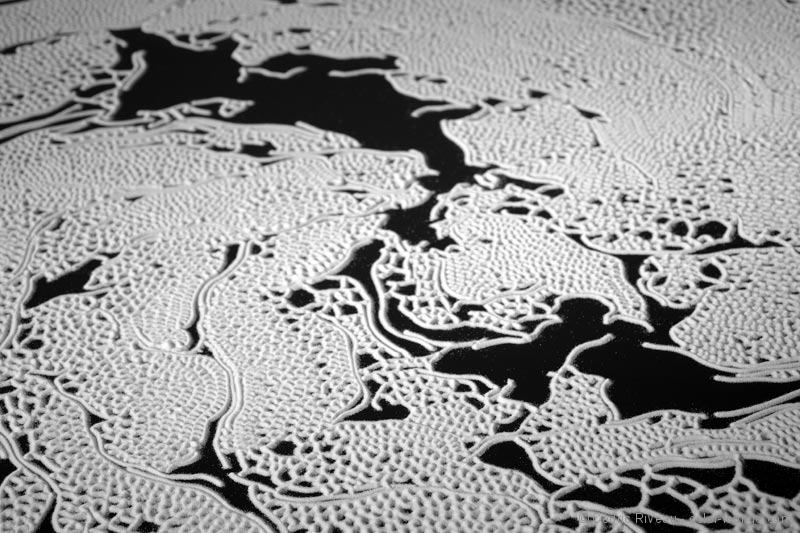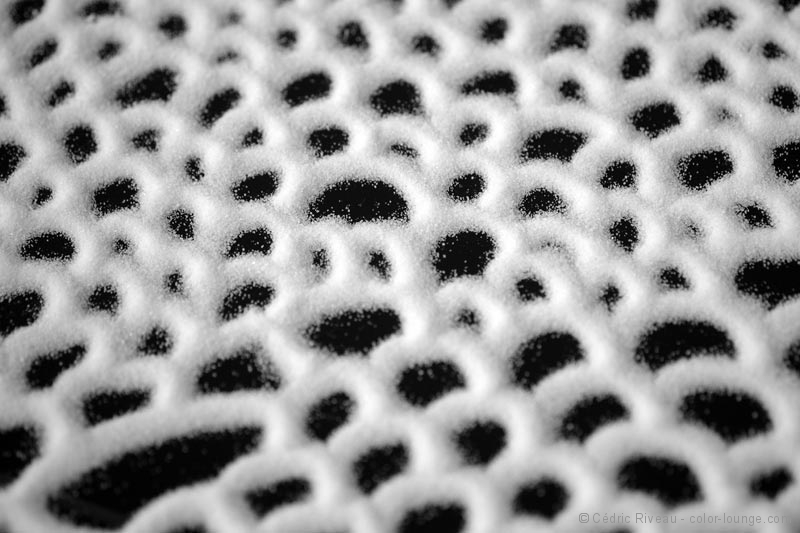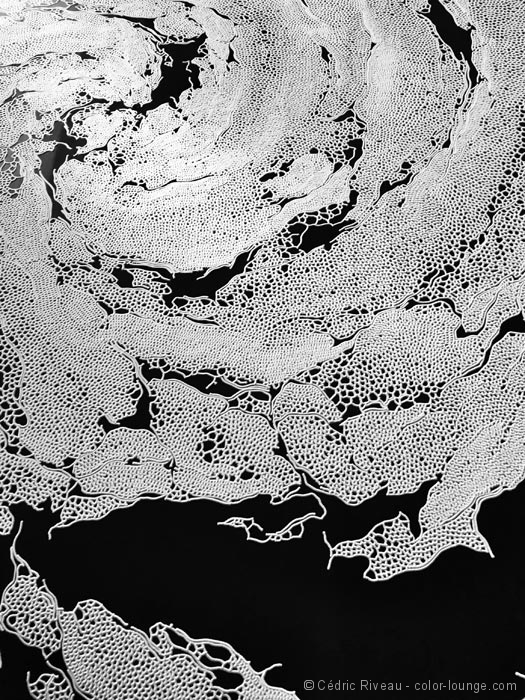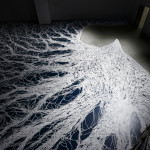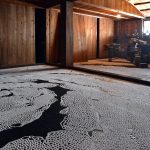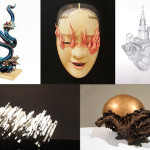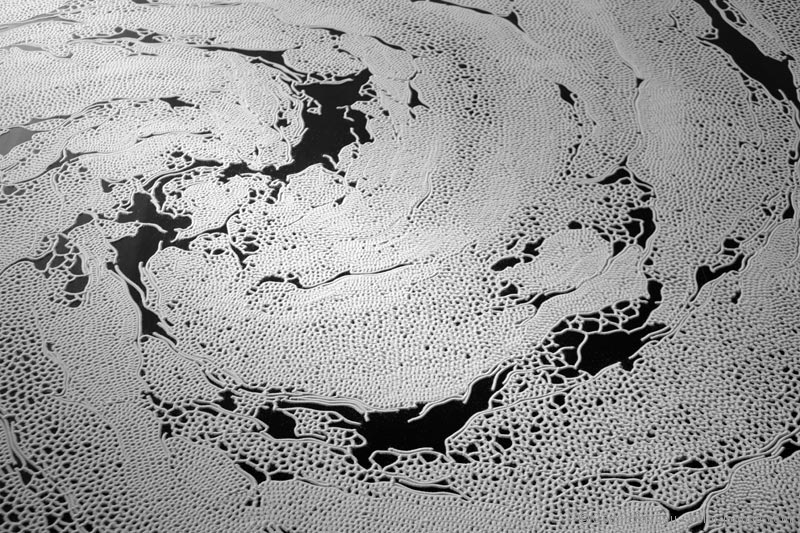
all photos by Cédric Riveau, used with permission | click to enlarge
“My sister passed away from a brain tumor when she was 24,” says Motoi Yamamoto. “That was my origin.” The word ‘origin’ is a reoccurring word in the Japanese artist’s vocabulary. He uses it to refer to the moment in time he began creating his labyrinthine installations of poured salt, as if he had been reborn.
We think of salt primarily as a cooking ingredient but in Japan it’s an element of the Shinto tradition that symbolizes purification. And for the last several years Yamamoto has traveled the world creating sprawling installations of poured salt that resemble mazes, tree roots, whirlpools or the universe. Figuratively and literally one can easily get lost in the intricate installations that are the result of hours of meticulous pouring.
With the help of visitors and volunteers that salt will be carried away and returned to its origin: the sea.
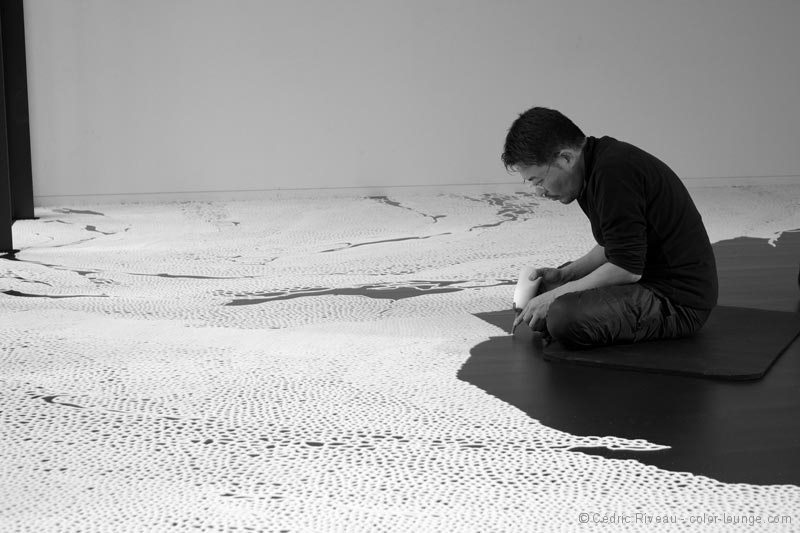
Yamamoto sitting on a cushion pouring salt. His works are almost entirely improvised with mistakes and imperfections often left intact.
Yamamoto also uses the word ‘origin’ to refer to his latest installation. Returning to Japan after much time spent on the road, “Return To The Origin” has just opened at the Pola Museum Annex in Tokyo. A sprawling installation of salt ripples through the large space morphing, at times, into larger currents. As we all know, saltwater oceans support life on earth and there’s something incredibly poetic about salt being used to commemorate the loss of life.
“Return To The Origin” will be on display through March 1, 2015. As is the case with all of Yamamoto’s installations, once it finishes it will be destroyed. With the help of visitors and volunteers that salt will be carried away and returned to its origin: the sea.
